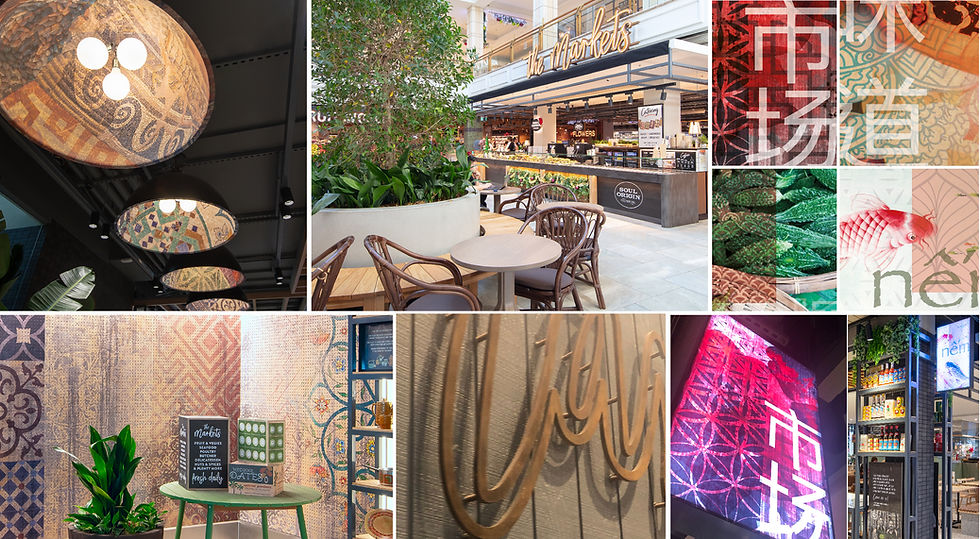The icing on the cake. How to make the most of your retail design through visual merchandising.
- dovetaildesign
- Jan 24, 2022
- 3 min read
Clients invest heavily in designing and building beautiful retail stores, but it is surprising that few retailers allocate the right amount of attention to visual merchandising.
The product should be a hero and needs to be carefully displayed to reflect this. Retail displays, whether they are part of a shopfront or in-store, need to be presented to reflect the story of the brand or theme. Often, LESS IS MORE, but commonly retailers feel the need to oversaturate a display with more and more product.
Visual merchandising is the icing on the cake of great retail design. Here are our top tips for making displays look great.

1. Use the power of colour.
This is a design choice as well as a marketing one. Often, it’s the colour of a display that catches the eye. Bold colours that coordinate well can create a distinct visual distraction as visitors wander through a store urging them to stop and investigate. Equally, it can be best not to overdo it. If the product presentation is busy, keeping it simple with basic black and white and a pop of colour may have more impact. Alternatively, consider the use of a brand or a seasonal colour palette as the basis for selection.
2. Using blank space.
We all know that retail wall and floor space is extremely valuable and should be utilised appropriately. At the same time, it is important to take a balanced approach when adding visual merchandising to unused space. Every inch of the retail store does not need to be filled with visual merchandising and product display. Strategic use of blank spaces should be considered so that you don’t overwhelm customers. Consider lifestyle imagery or brand statements in unused spaces to form a connection with visual merchandising whether it is close by or in another location within the store. Alternatively, leave some blank space around your key feature displays to make a more powerful statement.
3. Build a story into the theme.
Great visual merchandising creates a connection with customers to encourage them to buy. Engaging customer experiences can be created when a retailer weaves a theme into the merchandising. The right props, colours, images, words and signage combine into a cohesive display and story. It only takes a few elements to create a strong theme and build a powerful relationship with the customer.
Working alongside MTRDC at The Markets Roselands, we created a layer of environmental graphics to reflect the rich cultural diversity of the local community. Visual Merchandiser, Catherine Malady from POD, incorporated exotic displays with eclectic cultural objects and vibrant packaging alongside stories of the local food retailers to enhance the overall design and build on the unique sense of place theme.
4. Create a focal point for the design.
It’s easy to be carried away with designing around a theme but it’s important not to forget the reason for the display. The product must always be the focal point, not the display itself. A clear focal point can increase sales significantly. Ideally, the focal point should be at or just below eye level so it’s easy to see from the first glance. Consider the display from different angles and different points of approach to ensure the product is immediately noticeable.
5. Don’t neglect signage.
The basic rule of signage is that customers must be able to easily read the sign in 5 seconds or less. That means keeping key messages short and simple. Use a clear font with a headline, short product benefit statement, and a call to action. Customers generally won’t read more than that and most will only look at the headline and call to action. The graphic design should match the branding and the display theme, so it remains a consistent story.
Effective visual merchandising is a critical part of building a strong retail brand. Whether it’s large-format signage or pop-up displays, the power of colour, form and story must be cohesive and clear enough to stop the customer walking by. It’s the final layer of enhancement that completes the retail design and store presentation.







Comments